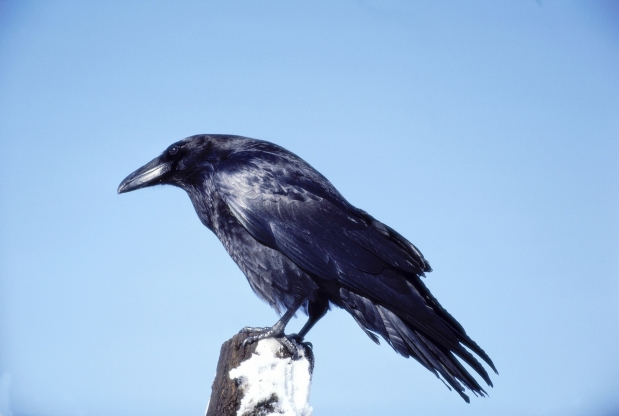
A deadly paralysis is striking ravens and crows in the Peace River region.
Leona Green, who runs the Hillspring Wildlife Rehabilitation facility in Dawson Creek, said Wednesday that she has had dozens of reports of ravens and crows being found sitting on the ground unable to use their feet.
"At first it was ravens and now we're seeing crows," said Green.
University of B.C. professor Patrick Mooney, who specializes in biodiversity and urban birds, believes it's possible that the birds have died from contracting the West Nile Virus that is carried by mosquitoes.
"The tip-off is that it started in ravens and now it's being seen in crows," said Mooney.
"Ravens and crows belong to the corvid family of birds and are particularly susceptible to the West Nile Virus. So if I have to guess, that's what I'd say it is," he said.
Mooney said the deaths of corvids can act as an early warning system that the virus - which also affects humans - has arrived.
"It's something we've been watching for for a long time," he said.
The province of B.C. has had a dead bird surveillance program for West Nile Virus since 2011, he said.
The virus, which is spread to humans by mosquitoes that bite infected birds, arrived in North America in 1999. It has killed 42 people in Canada since 2002. The last confirmed case of human infection in B.C. was in 2010, according to the B.C. Centre for Disease Control. There were no positive tests in 2011 or last year.
Green first began getting reports of paralyzed birds at the end of May.
"The first report was from Tumbler Ridge on May 31 but we've had quite a few others since then. And they are from all over: Dawson Creek, Tumbler Ridge, Chetwynd, Taylor and as far north as Fort St. John," she said.
It wasn't until last Friday that she became concerned about the number of reports and went to the local newspaper, the Dawson Creek Daily News, which ran a story that appeared Tuesday.
Since then the number of calls coming in have intensified and now people are reporting the paralysis in crows as well, she said.
Green estimates she has had more than 30 calls concerning paralyzed birds.
Some have been brought in alive but none have survived.
"They are all feathered out, there's no wing damage and they seem quite bright, and if you feed them by hand they will eat. But their legs are completely paralyzed and their claws are clubbed with no feeling from their spines to their legs," said Green. "And naturally without the use of their legs they can't launch themselves and fly."
Mooney said the virus is a threat to some native bird species.
"The bird population in the Georgia Basin is already in serious trouble and this could be the straw that breaks the camel's back for some species," he said.
When the first reports came to Green, she told callers that if the birds had died to dispose of them but now she is asking them to bring them to her.
She is collecting specimens for the provincial Fish and Wildlife branch to analyze.
So far she has four specimens that she has refrigerated and says she needs some more.
"Hopefully they'll be able to tell us what happened to them," she said.
Green, 78, has run the Hillspring facility for 35 years.
She is believed to be the first person in the province to rehabilitate orphaned grizzly bear cubs.
Green raised and released cubs back into the wild first in 1999 then again in 2006.
"I just love grizzlies. I know a lot of people don't, but they're so cute."



The Crow Report
Researchers for the Pennsylvania Turnpike Commission found over 200 dead crows near the City of Pittsburgh recently, and there was concern that they might have died from Avian Flu. A bird pathologist examined the remains of all the crows, and, to everyone's relief, he confirmed the problem was definitely NOT Avian Flu. The cause of death appeared to be vehicular impacts.
However, during the detailed analysis it was noted that varying colors of paints appeared on the bird's beaks and claws.
By analyzing these paint residues it was determined that 98% of the crows had been killed by impact with a truck, while only 2% were killed by an impact with a car.
PTC then hired an ornithological behaviorist to determine if there were a cause for the disproportionate percentages of truck kills versus car kills.
The ornithological behaviorist very quickly concluded the cause: when crows eat road kill, they always have a look-out crow in a nearby tree to warn of impending danger.
The conclusion was that while all the lookout crows could say "Cah", none could say "Truck."